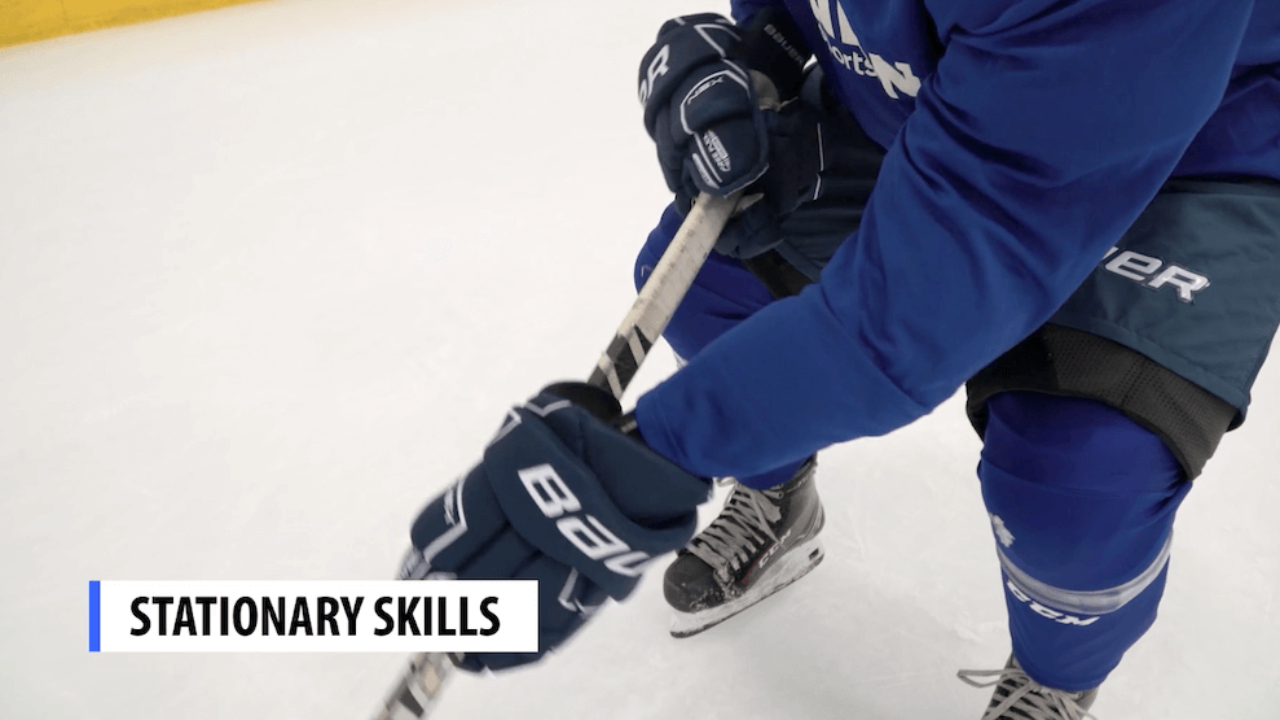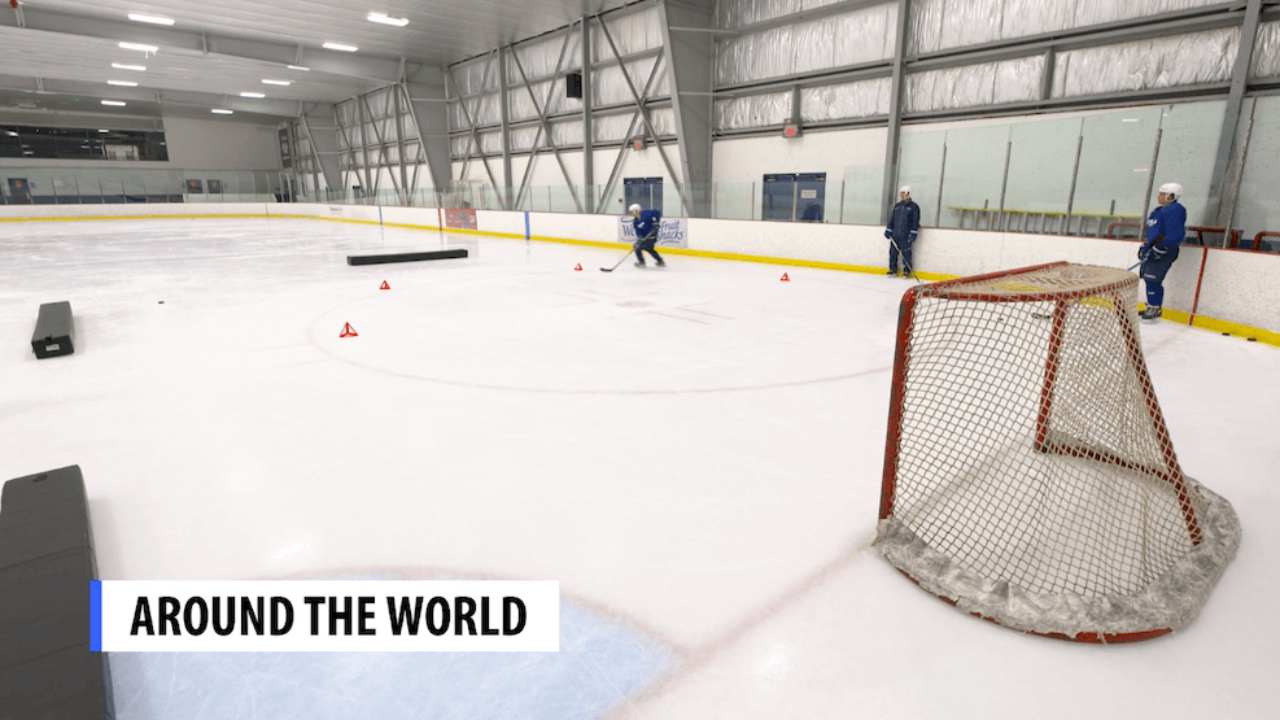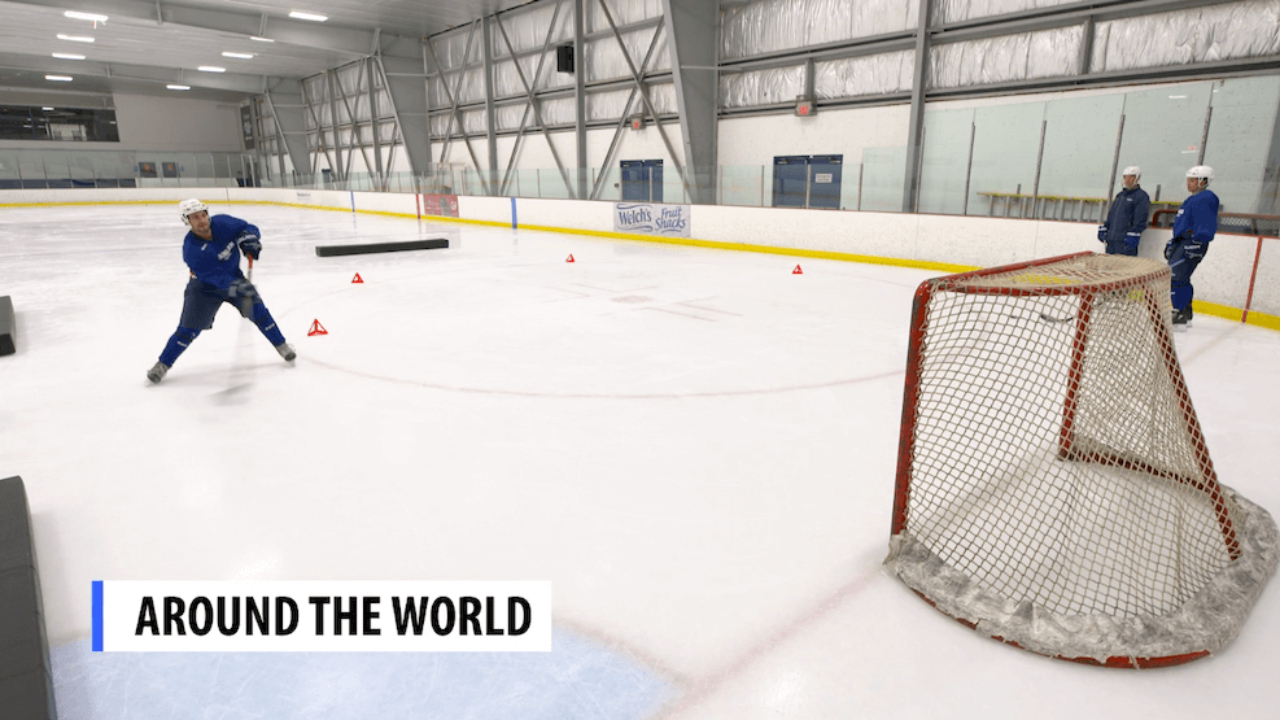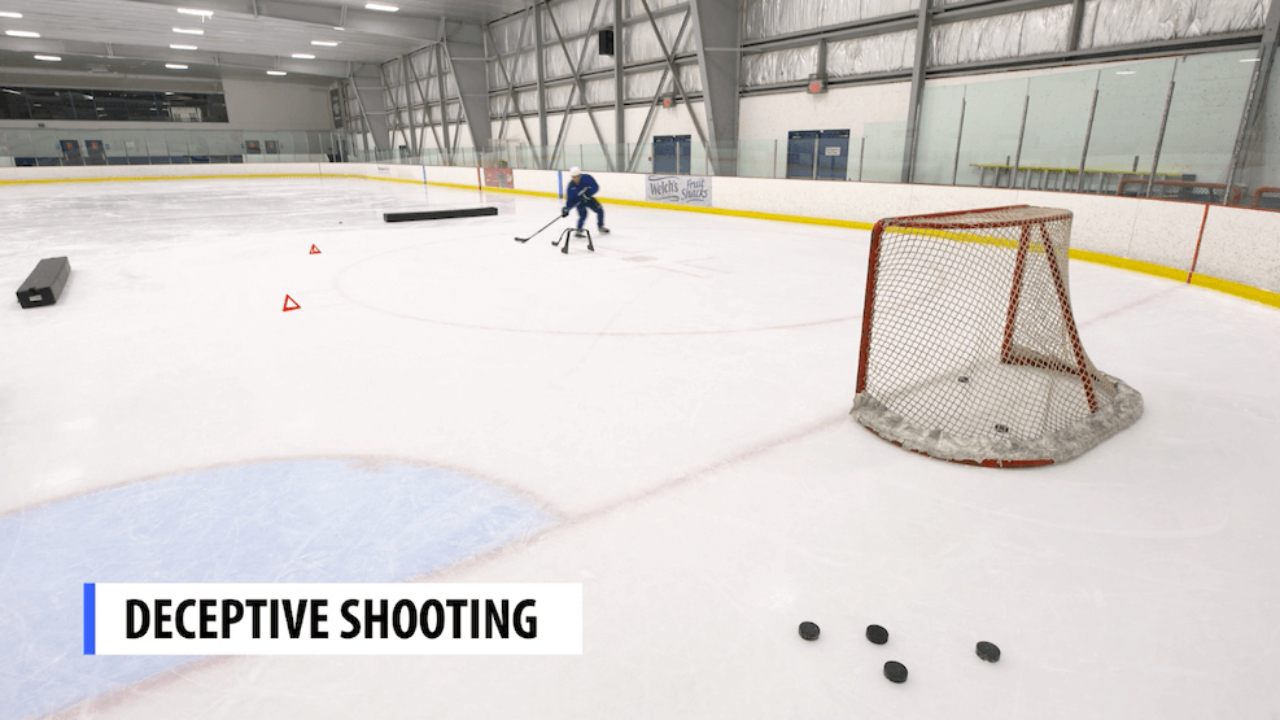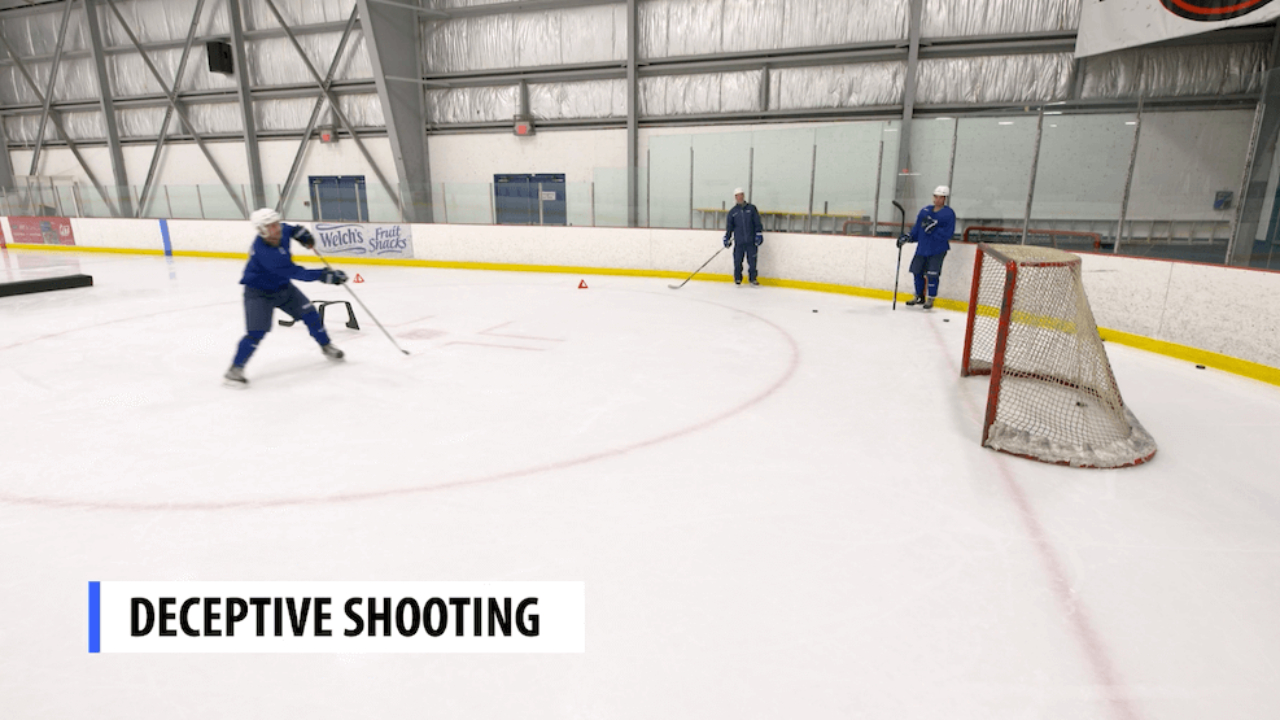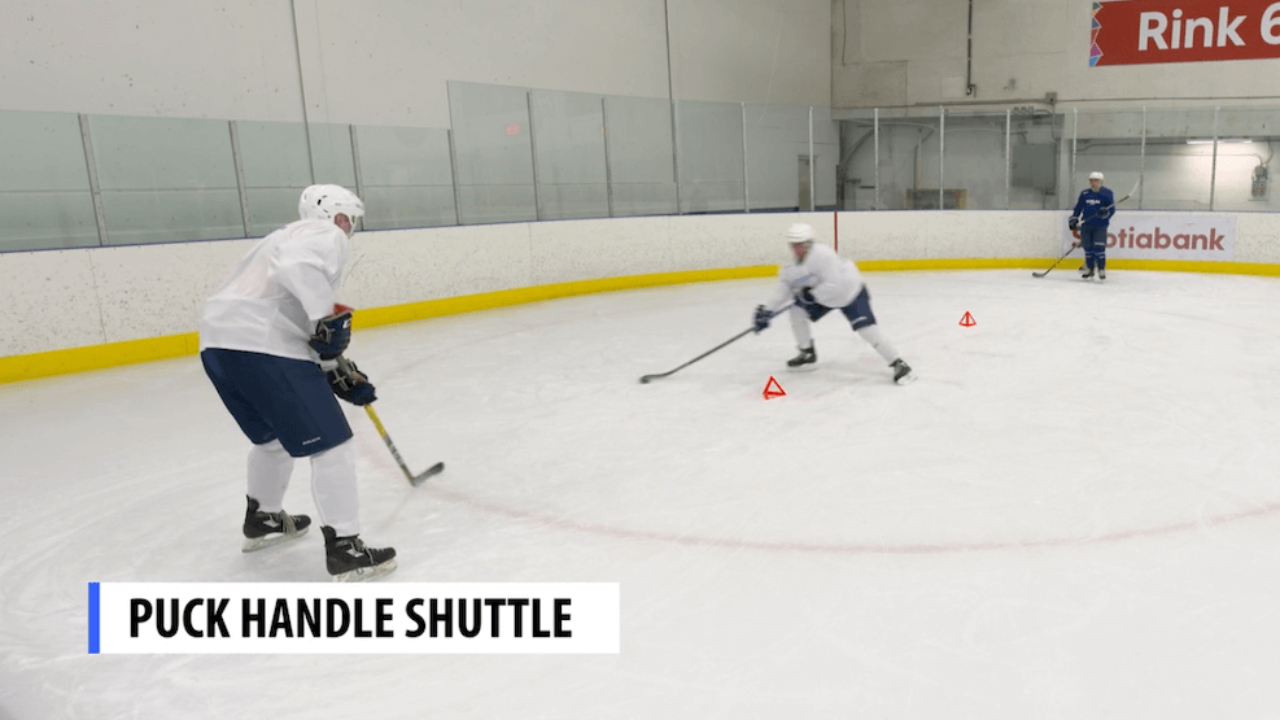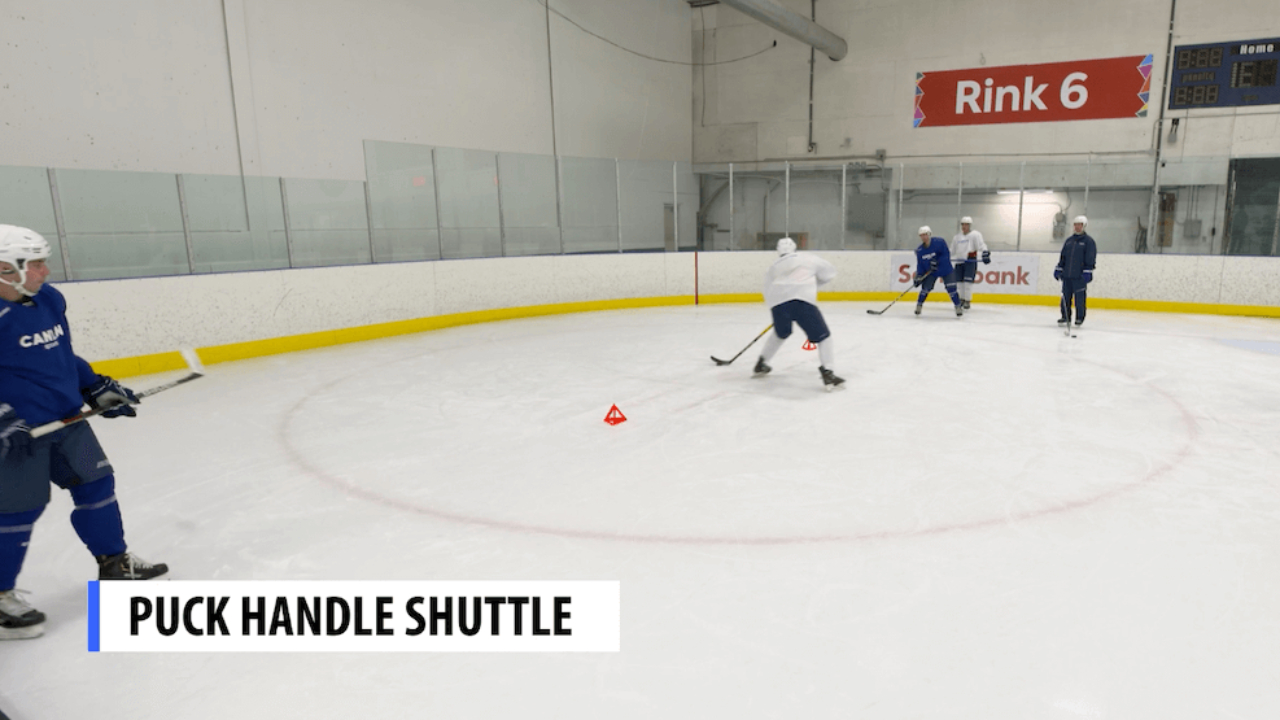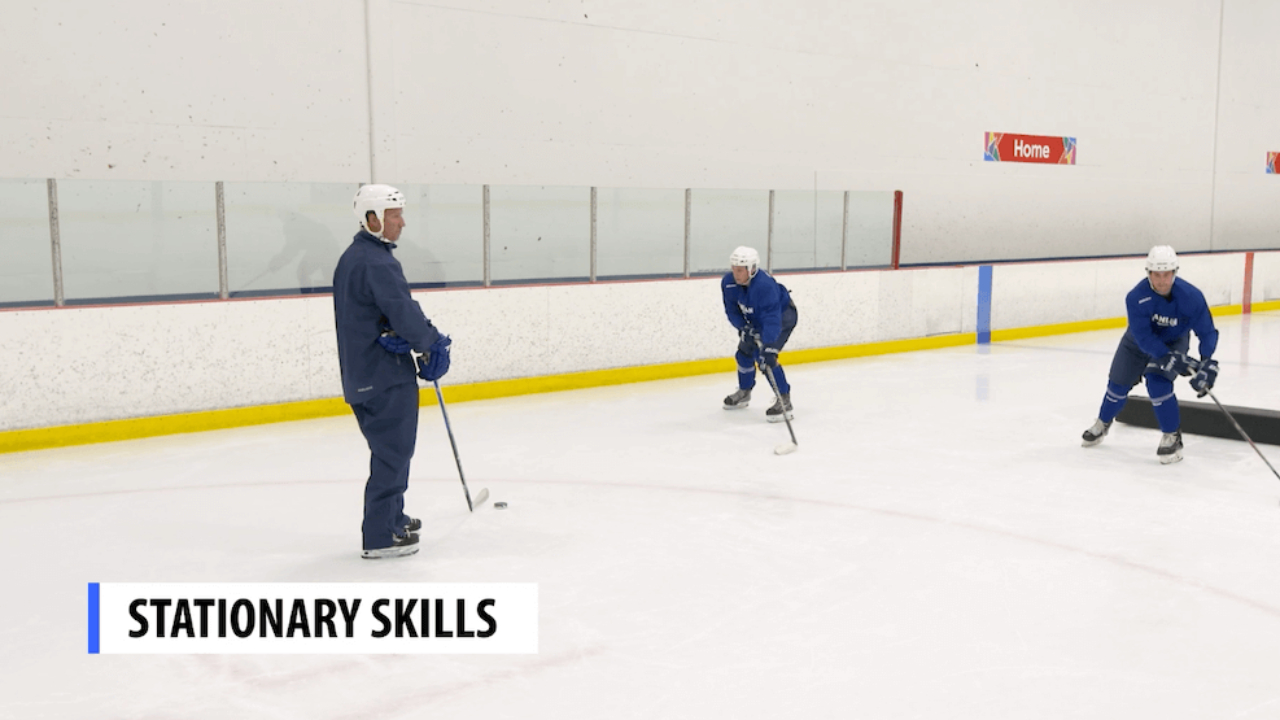Every August I do an agility camp with a lot of quickness and on-your-toes skating. But for the first part of each ice session, I warm up with zone-to-zone stickhandling with a focus on heel edges. I get the players to sink into their heels, put the puck on the heel of their blade, and work on numerous drills that include upward of a thousand reps. If you watched Tyler Dittmer's on-ice presentation at TCSlive a couple of weeks ago in Ann Arbor on deception shooting, you would have noticed the player's amazing heel edges pre and post-shot releases. Utilizing heel edges effectively can transform your game, allowing for better stick handling and control on the ice.
Slowing Down the Play with Strategic Heel Edging
By expanding your stance beyond shoulder width and applying pressure to your heel edges, you effectively manage your momentum while keeping the puck securely on your blade. Aligning your top hand at your body's center enhances your stability, allowing for precise control over the puck's movement. This stance not only prepares you to absorb and evade incoming pressure from opponents but also enables you to survey the field for optimal passing lanes or shooting angles. It's a tactical method that leverages your heel edges to dictate the game's pace, giving you the upper hand in developing plays and setting up scoring opportunities.
In this clip, you can see how he "slows" down by setting back into his heels to make an agility move around the defender. Once he gets around the second defender using his heel edges, he continues to get into his heels and head on a swivel to make the pass across for a goal.
Positioning the Puck for Maximum Control
The puck should rest on the heel of your blade to facilitate a broad range of movements swiftly. Adopting a stance that is slightly wider than shoulder-width with knees bent ensures stability and readiness for action. This position not only offers solid footing but also primes you for passing, shooting, or advancing with the puck. It’s about creating a balance between control and preparedness, enabling you to transition smoothly between maneuvers. Engaging in this specific puck positioning allows for enhanced maneuverability, setting you up for effective gameplay and strategic advantage on the ice.
Maintaining Agility Under Pressure
When opponents close in, the ability to swiftly change your course or adjust your speed becomes invaluable. Utilizing your heel edges for these quick transitions can give you the upper hand, allowing for seamless direction shifts without sacrificing puck control. Keep your gaze forward and constantly assess the play, ready to dodge defensive efforts with grace. Practicing tight turns and sudden stops while keeping the puck secure enhances your capability to react under duress. This skill set not only aids in evading challengers but also in creating unexpected opportunities for your team through your adeptness and agility.
Practice Drills to Improve Heel Edge Skating and Stick-Handling
One beneficial drill is navigating a series of cones arranged in a slalom layout while focusing on keeping the puck at the heel of your stick blade. This exercise challenges your balance and precision, promoting greater puck control. Another effective drill involves alternating between rapid sprints and abrupt stops using your heel edges, then quickly resuming motion. This not only sharpens your ability to swiftly decelerate and accelerate but also strengthens your overall skating agility. Incorporating these drills into your training regimen will refine your coordination and finesse, which are crucial for excelling in dynamic game situations.



